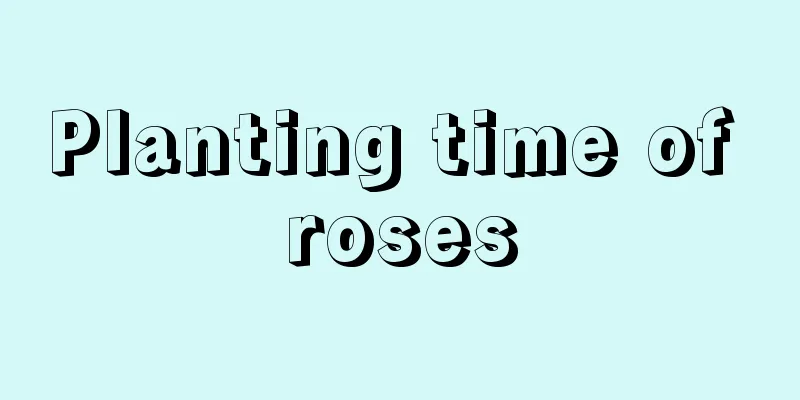Planting time of roses

Planting and managementGenerally, the best season to transplant roses is after the soil in Leso thaws. When digging up the seedlings, be sure to make a good ball of soil and try not to damage the roots. In order to reduce the evaporation of water from branches and leaves, some branches and leaves should be pruned off appropriately (no more than one third). After planting, water and shade should be provided in time. After a week of seedling acclimatization period, the plants should be exposed to weak light in the morning and evening, and gradually placed under full sunlight for daily management. Roses are relatively drought-resistant, and the soil should not be too moist, especially waterlogging. For roses planted in the ground or in pots, water them thoroughly once, and then water them again when the topsoil is dry. Especially the first watering after transplanting, make sure to water it thoroughly. If it is not thoroughly watered in one go, you should continue to water it until it is thoroughly watered. Afterwards, according to the principle that the soil is sometimes wet and sometimes dry, watering should be carried out reasonably according to the soil moisture, weather conditions and the growing season of roses. Some rose lovers, fearing that the roses will dry out and die, water them frequently, causing water accumulation in the soil, making it wet and sticky. This is not conducive to the breathing of the rose roots, causing the roots to rot and eventually die. The main fertilizers for roses should be coarse fertilizer and base fertilizer. Applying more organic fertilizer will help improve the soil, which will improve the soil's water retention, permeability and ventilation properties. When applying organic fertilizer as base fertilizer or topdressing, you must make sure it is thoroughly decomposed. When applying base fertilizer, avoid piling it at the base of the rose's rhizomes. It is not advisable to apply liquid fertilizer or concentrated fertilizer. Otherwise it will be detrimental to the growth of roses and may even cause death. Roses are suitable for growing in fertile, loose, breathable and well-drained neutral sandy loam. The potting soil is a mixture of 40% decomposed horse (cow) dung, 40% garden soil, and 20% sand. It is loose, breathable, and has poor water retention and drainage properties, which is also the main cause of rose death. |
<<: How to grow the succulent spring miracle
>>: These 8 indoor hanging basket plants grow into a large bush
Recommend
What kind of crop is Job's tears? What kind of crop is it?
What kind of crop is Job's tears Job's te...
Primrose cultivation methods and precautions
Primrose is relatively easy to grow, and as long ...
When does the peony bloom?
1. Flowering time Peonies usually bloom from Apri...
How to grow potted lotus to make it grow taller (planting method of domestic lotus root potted lotus)
Soil for growing lotus The soil for potted lotus ...
What are the cultivation methods and precautions of summer pansy?
The summer pansy is a very easy to grow plant. It...
How to prune azalea
When to prune azaleas The pruning time of azalea ...
How to grow Monstera fast
one. soil: 1. This plant likes fertile soil, and ...
When is the best time to transplant a grapefruit tree?
September to December every year is the fruit rip...
The advantages and disadvantages of holiday fireworks roses
The Festival Fireworks Rose is a shrub rose . The...
What fertilizer is best for sunflower?
Oil sunflower fertilization time Generally speaki...
How to eat mulberries
How to eat mulberries Mulberry Jam Method: 1. Tak...
Why do Clivia leaves become soft?
Symptoms of Clivia leaves becoming soft Needless ...
Precautions for repotting Daphne koreana
Precautions for repotting Daphne koreana Daphne k...
Can Milan flowers be placed in the bedroom?
Is it poisonous? Milan flowers are not poisonous....
How does the ginseng banyan tree grow luxuriantly and its roots become larger?
1. Water appropriately It likes a slightly moist ...









